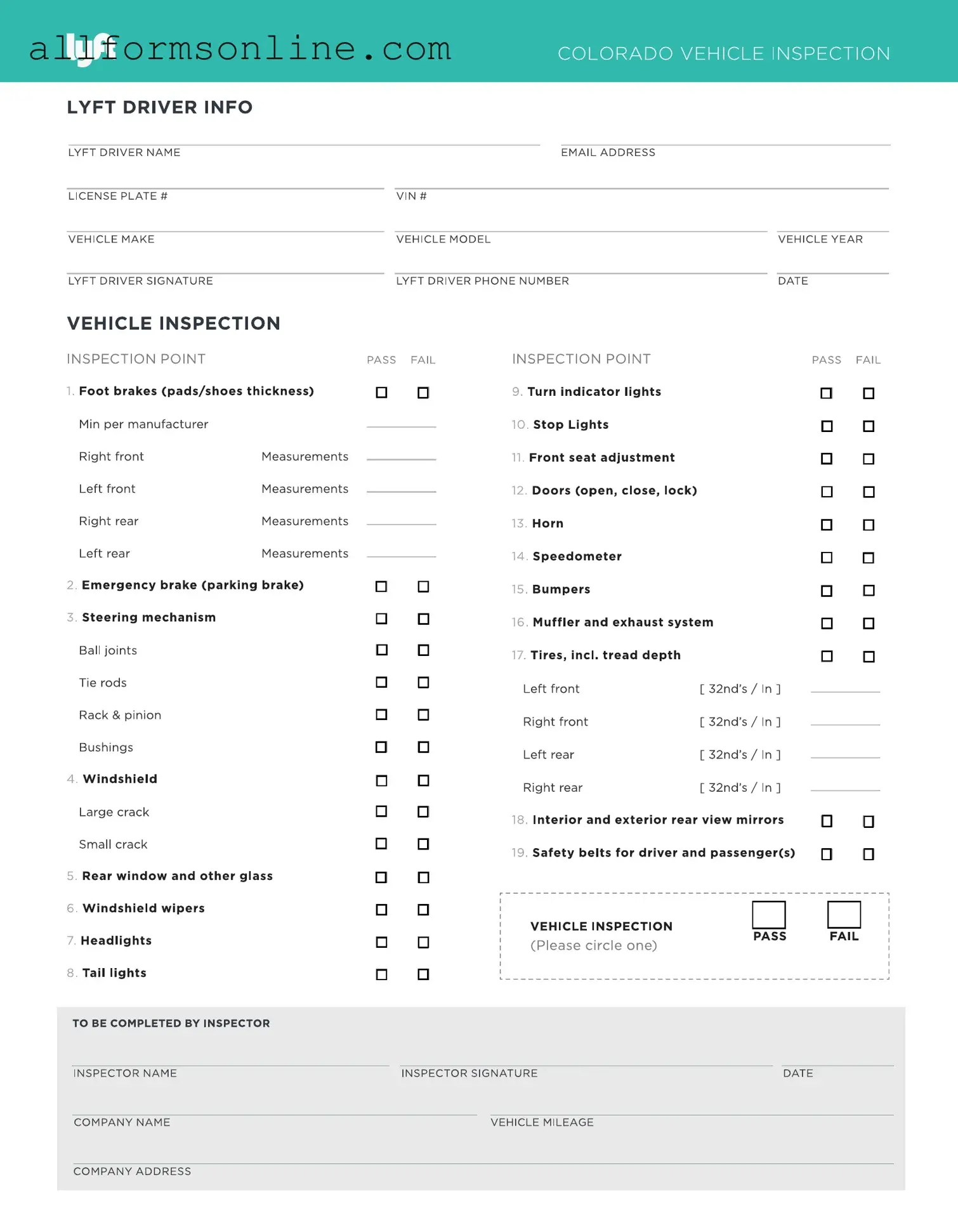What is the Lyft Inspection form?
The Lyft Inspection form is a document that drivers must complete to ensure their vehicles meet safety and operational standards. This form is crucial for maintaining the quality of service and safety for both drivers and passengers. It typically requires information about the vehicle’s condition, including brakes, lights, tires, and other essential systems.
Who needs to complete the Lyft Inspection form?
All Lyft drivers are required to complete the inspection form for their vehicles. This applies to both new drivers who are just starting and existing drivers who may need to renew their vehicle's eligibility. Completing the inspection ensures that your vehicle is safe and compliant with Lyft's requirements.
How often do I need to submit the Lyft Inspection form?
You need to submit the Lyft Inspection form annually or whenever you change vehicles. If your vehicle undergoes significant repairs or modifications, it may also be necessary to complete a new inspection form. Keeping your vehicle in good condition is essential for your safety and the safety of your passengers.
Where can I find the Lyft Inspection form?
The Lyft Inspection form can be found in the driver app or on the Lyft website. You can download it directly from these platforms. If you have any difficulty accessing the form, reaching out to Lyft support can provide you with the assistance you need to obtain it.
